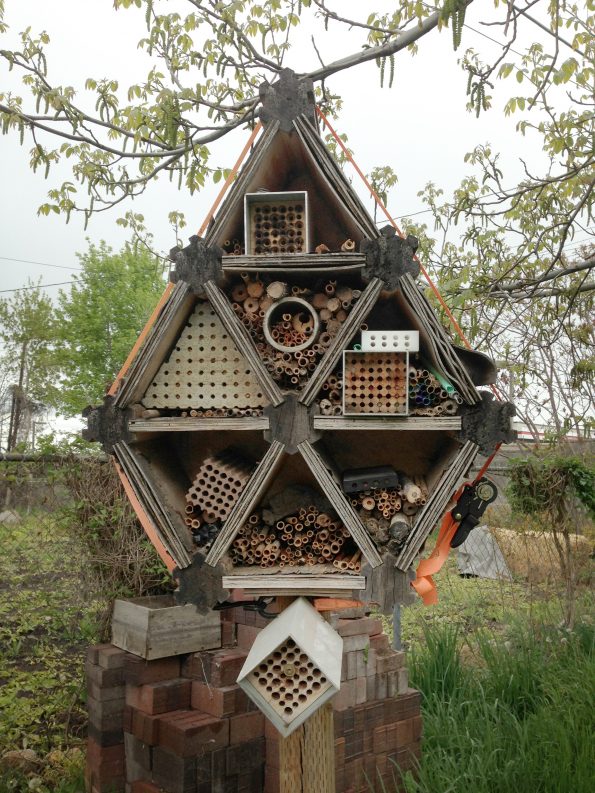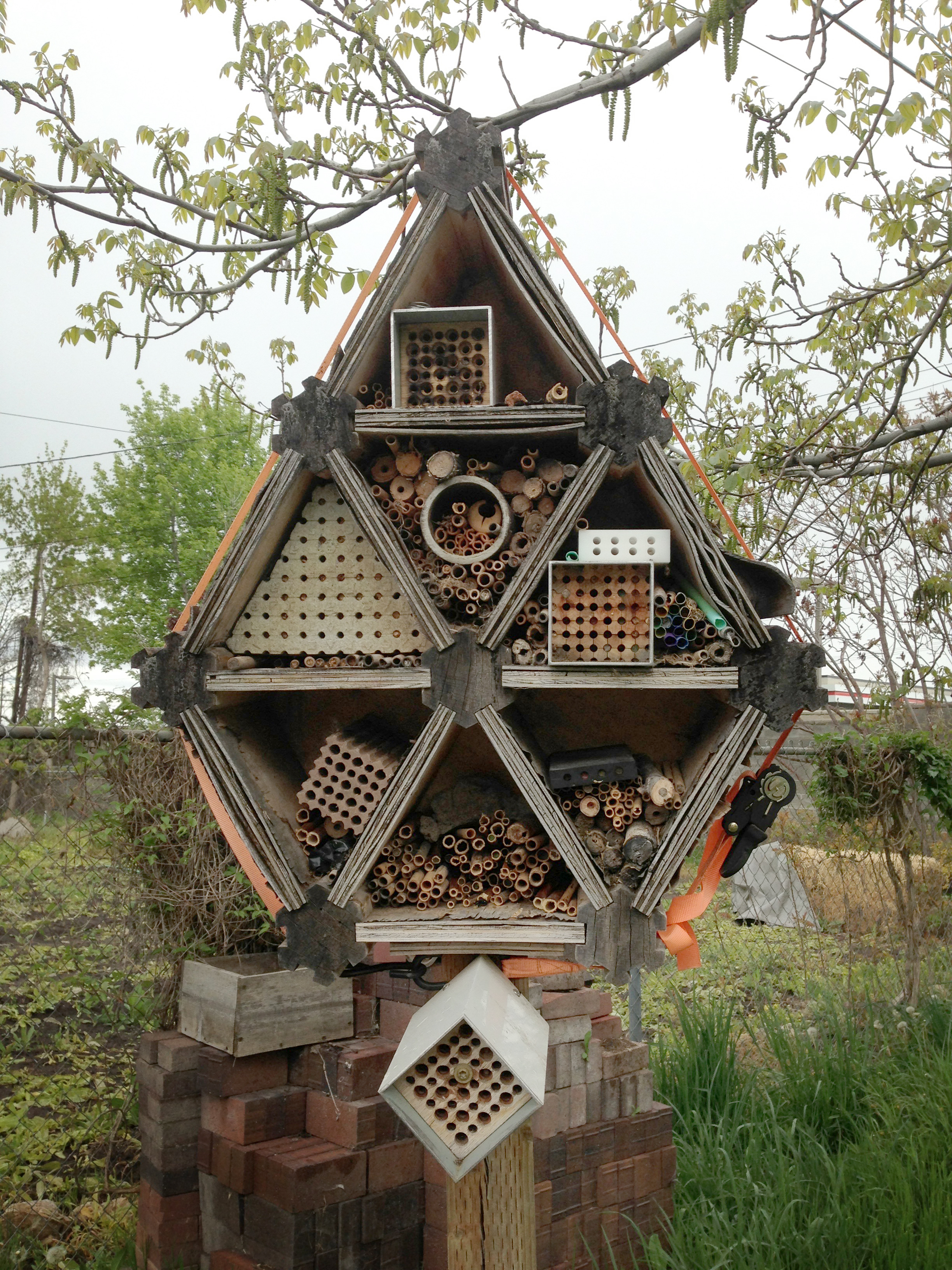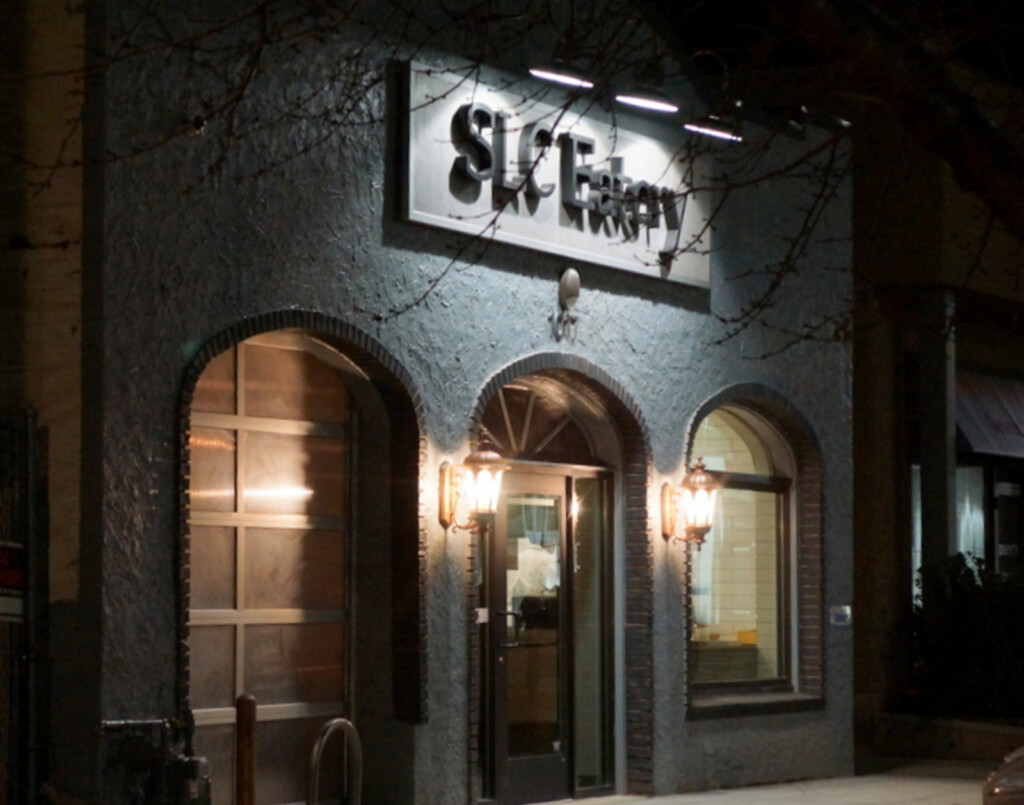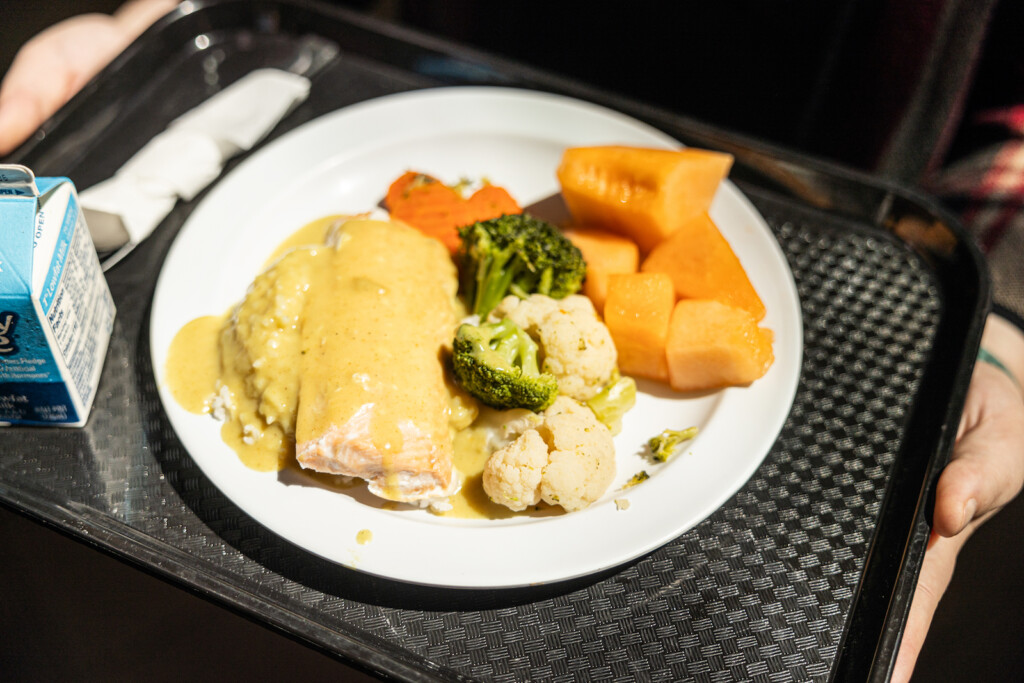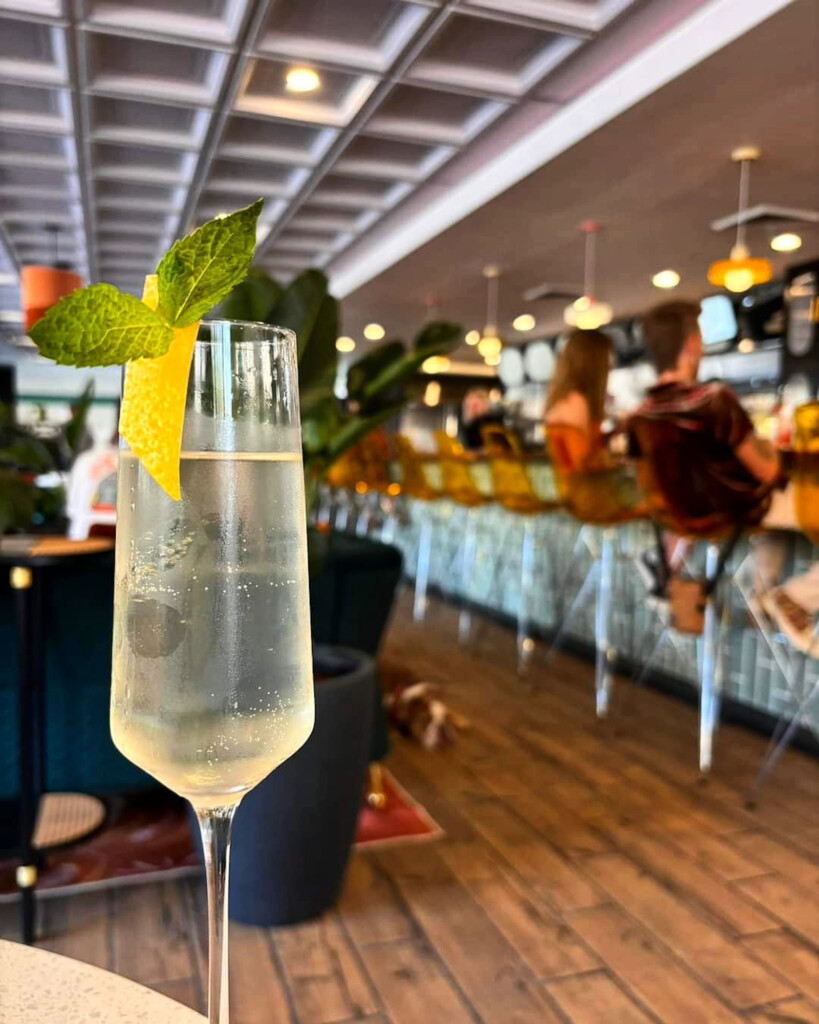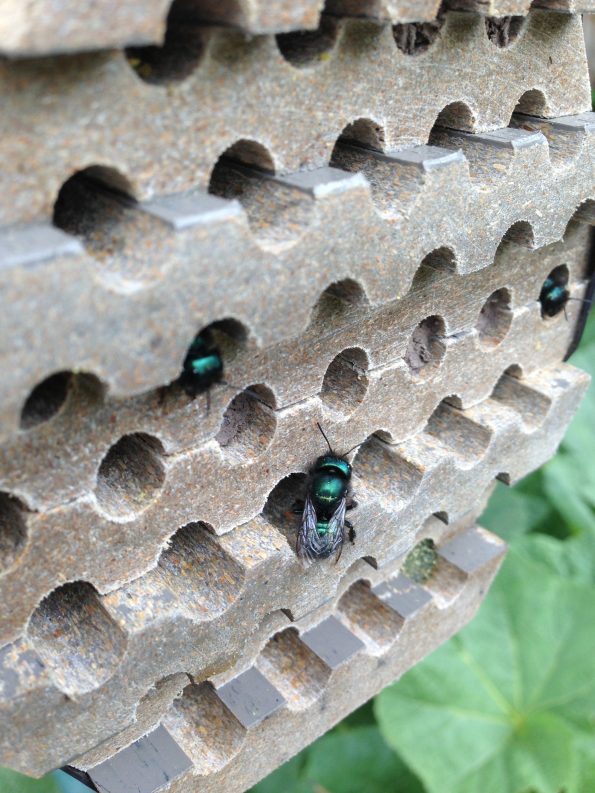
Mason bees (Osmia lignaria) are amazing pollinators. The trick is to get them to nest nearby if you want flourishing spring crops. In fact, mason bees have been nicknamed ‘orchard bees’ since they are so good at pollinating fruit trees.
Kimball Clark has worked diligently for the last few years to design a structure that not only lures bees in, but to also allows them to reproduce in large numbers. His latest design, the Hex Bee Condo, seems to be the winning combination of design and material. It is made of plastic because wood has too many variables, depending on the weather.
“My son was fascinated by bees at a very young age, so I thought I would get him some and have him grow up with bees all around,” Clark said. I remembered seeing something about a guy who had bees that were sting-less, and after looking into it further, I discovered that the Mason bees were natives here.”
The friendly, blue-hued Mason bee comes out in early spring and pollinates apples, cherries, almonds, etc. Upon further research, Clark understood what it took to capture these bees and began his process of creating the right structure and method for colonizing them.
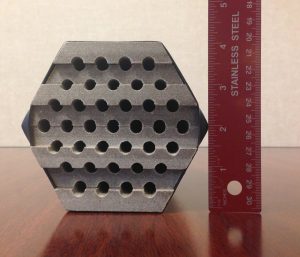
“These are solitary bees; they collect pollen on their bellies, climb into the (nail sized) cavities and scrape it off, pushing it against the back wall and laying an egg on it,” Clark stated. “That female is working hard, laying six eggs per hole, which will fill about three holes, so she lays about 18 eggs. Those eggs will hatch throughout the summer and the larvae will go through the metamorphosis process much like butterflies, and emerge as bees the following spring.”
Clark hopes to begin taking orders for the Hex Bee Condo, and he is working on getting the cost down.
For more information visit www.nativebees.com.
